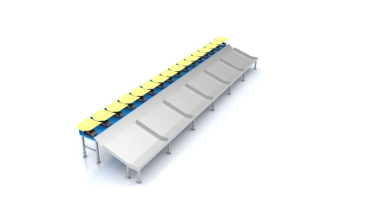Trekking to Gokyo Lakes and Everest Base Camp A Sherpa-Led Adventure

The Everest Base Camp trek and the trek to Gokyo Lakes is truly a once-in-a-lifetime experience which is how both these destinations will be recalled for the rest of your life, combining world-class landscapes, stunning natural beauty, rich culture, and personal achievement. Trekking through the Khumbu region with expert Sherpas not only offers a physical challenge, but it will also take a deep dive into the rich history and traditions of the Sherpa people. The hike will lead you through some of the best scenery anywhere in the world, either through lush forests or high-altitude glaciers that afford incredible views of the giants of the Himalayas, which includes Mount Everest.
The adventure begins with an exciting flight to Lukla, where the walk begins through beautiful village scenes. With every upward step, the landscape transforms leading to breathtaking sights of the majestic mountains and tranquil valleys. Sherpas themselves, with their profound bond to the terrain, are essential guides. Trekkers benefit from their extensive knowledge of the terrain and culture, so that they are safe, informed, and fully immersed in the experience. They share along the way stories about the spiritual meaning of the mountains, the region’s history, and the colorful Sherpa culture.
A highlight of the trek is reaching Gokyo Lakes, a series of turquoise glacial lakes against a backdrop of snow-covered peaks. Trekkers enjoy an unparalleled view of Everest, Makalu, and more from the top of Gokyo Ri. With each step toward Everest Base Camp, the accomplishment feels even more achieved. It’s a life-changing experience to stand at the foot of the world’s highest peak.
Guided and assisted by Sherpas, trekking to Gokyo Lakes and Everest Base Camp becomes not only a physical pursuit, but also a chance to experience the mountains, culture, and people of the Everest region on a level that few others will ever know.
Everest Base Camp and Gokyo Lakes Trek Overview
One of the most thrilling and fulfilling trek including in the Everest region of Nepal is the Gokyo Lakes and Everest Base Camp Trek Package. The Everest Gokyo Lake TrekKing two of the great destinations, Everest Base Camp and the Gokyo Lakes, this trek helps trekkers experience a unique and varied experience in the heart of the Himalayas. The trail leads through stunning Sherpa villages, dense forests, and challenging mountain landscapes, with breathtaking views of Mount Everest and surrounding peaks. The trek to Everest Base Camp is a bucket list journey for many, allowing trekkers to get within striking distance of the world’s highest peak. Alternatively, if you want some peace then the Gokyo Lakes route, with its stunning high-altitude lakes and majestic peaks, is a fantastic choice. The trek also includes Gokyo Ri where you can get some of the best panoramic views of the Everest region. It is a long trek (6000 steppers, this is an incline, extremely difficult yet very fulfilling), but we have escorted to the top if you get to share it (it’s supposed to be two install videos, after a hike) is Dos to say it was worth it. Trekkers are able to traverse the vast, rugged land with the assistance of expert guides, and Sherpa support, making their way through the exhilarating experience of confronting all that is involved in reaching such peaks. Whether you are an experienced hiker or an adventurous traveler, this trek is not only beautiful but promises an unforgettable experience in the forsaken wilderness of the Himalayas.
How Sherpas Factor Into Your Adventure
Gokyo Lakes and Everest Base Camp Trek: The Role of Sherpas Sherpas are an average of between 8,000-9,000 feet. Native to the Khumbu region of Nepal, Sherpas are celebrated for their physical strength, mountain skills, and deep familiarity with the Himalayas. They also make sure that trekkers are following the safest and most efficient paths and skillfully navigate the rugged terrain and high-altitude challenges. The Sherpas are acclimatization experts and are trained to recognize the symptoms of altitude sickness, encouraging you to take care of your well-being throughout your journey. Porters | Porters play a huge role during trekking in Nepal, they help carry all of the required equipment and gear, which alleviates the burden on trekkers and allows them to enjoy their trekking experience without worrying about logistics. In addition to their practical function, Sherpas offer cultural insights that other trekkers often find invaluable and provide an opportunity to learn about Sherpa traditions, as well as Buddhism or the way of life in the Everest region. Their warmth, their hospitality, and their affinity with the land combine to create a welcoming setting for a trek that is not just a physical but also a cultural and personal journey. The Sherpas further enrich the experience by sharing their stories, traditions, and insights, allowing trekkers to fully appreciate the beauty of the Himalayas and the resilience of the people who live there. Trekking with Sherpas isn’t just a way to reach your destination, it’s a way to connect with the land and its people.
Tips for What to Know Before You Trek
Best Preparation for The Gokyo Lakes and Everest Base Camp Trek The adventure passes through difficult terrain and visits high altitudes, so physical fitness is essential. Cardiovascular activities like hiking, running or cycling will improve your endurance, while strength training will increase the resilience of your muscles for the long days of walking. They also need to acclimatize before making the final ascent; if they don’t, the altitude sickness. resulting from the thinner air at higher altitudes can be fatal. Be sure to plan for rest days during the trek so your body can acclimatize to the altitude. Also critical is preparing gear. A solid pair of worn-in hiking boots, waterproof clothing for unmanageable weather, and warm layers for chilly mountain nights are an absolute necessity. You’ll need a lightweight but sturdy backpack, trekking poles for balance , and, of course, a dependable sleeping bag. Keep your pack light, but don’t forget personal items like a headlamp, camera, sunscreen water purification tablets, or a filter. I strongly advise it, we chose this one only because they cover high-altitude trekking and emergency evacuation up to 6,000m. Finally, it is important to have a medical check-up before the trip, especially if you have pre-existing health conditions. You should make sure to prepare adequately for this trek, both physically as well as mentally, train adequately, plan well ahead, and approach the trek with patience and resolve.
Trekking Routes: Gokyo Lakes and Everest Base Camp
Gokyo to EBC via Cho La Pass Gokyo Lakes Trek vs Everest Base Camp Trek: Gokyo Lakes and Everest Base Camp treks are both challenging and rewarding journeys that take you to the heart of the Himalayas. The standard way to travel on the trail starts in Lukla (2,800 meters), where trekkers fly in from Kathmandu and trek first to Phakding, and then to Namche Bazaar (3,440 meters). From the Namche Bazaar, hikers will either continue on the Everest base camp route or branch off toward the Gokyo Lakes. The Gokyo route tends to be quieter than Everest Base Camp, as it takes you through several small Sherpa villages, lush forests, and high-altitude areas to the stunning Gokyo Lakes. The trail leads to Gokyo Ri (5,357 meters), where trekkers are treated to panoramic views of Everest, Cho Oyu, and Makalu. After visiting the lakes and summitting Gokyo Ri, the trekker can continue on to Everest Base Camp, either backtracking or taking an alternate route over the Cho La Pass, a challenging high-altitude path. Trekking through the Everest Base Camp route, trekkers get to pass by Tengboche, Dingboch,e and great views of Everest, Lhotse and Nuptse. Both the routes are wonderful, but both Gokyo Lakes Trek and Everest Base Camp Trek together provide a better covering of diverse and enriching experiences as the serene beauty of Gokyo integrates beautifully with the towering majesty of Everest.
When to Go for the Trek
The Gokyo Lakes and Everest Base Camp Trek can best be done in the pre-monsoon spring (March to May) and post-monsoon autumn (September to November) seasons. The weather during these seasons is relatively stable, with clear skies, moderate temperatures, and minimal rain, all helping make this the best time for trekking. In spring, the region is particularly vibrant as rhododendrons blossom along the route, coloring the landscape. Autumn, however, provides brisk, brisk conditions and some of the best visibility for views of the Himalayas, including Mount Everest. The daytime temperatures are pleasant, but the nights can be cold, especially at higher altitudes, and packing the right clothing is important. The best time to visit this trek is from September to November; avoid monsoon season (June to August), when the trails are too slippery, and landslides are a danger. In addition, the mountainous views are often obscured by the heavy downpour, which makes the journey less enjoyable. Winter (December to February) also isn’t a great time not only because of freezing temperatures and snow buildup, but the possibility of bad weather. During winter months, there are fewer trekkers on the trails, but the cold can be harsh, especially at higher altitudes. The most favorable weather, visibility, and ideal trekking conditions come in the spring and autumn months which is why these two seasons are significantly preferred for the Gokyo Lakes and Everest Base Camp trek.
How They Adapt and the Role of Altitude
Gokyo Everest Base Camp Trek difficulty Acclimatization is essential in the Gokyo Lakes and Everest Base Camp Trek as this trek takes you to more than 5000 meters altitude, where oxygen levels are significantly lower. Gradual ascent to avoid altitude sickness and a safe trek. As a rule of thumb, you should gain 300-500 meters of altitude per day, with rest days at various points en route for your body to acclimatize. For example, upon arriving at Namche Bazaar (3,440 meters), a required acclimatization day gives you time to adjust before moving onwards and upwards. Additionally, make sure to stay hydrated, eat well, and avoid over-exertion during the trek to help the body acclimatize to the lower oxygen levels. Symptoms of altitude sickness include headache, dizziness, nausea, and fatigue; if they become more severe, it’s important to go immediately to a lower altitude. Your Sherpa guide is critical here as well since they know altitude sickness and can help make decisions that impact your health and safety. Besides physical adaptation, a good mindset, making your own pace and listening to your own body help you tackle the hardships of trekking high altitudes. Avoid the unpleasantness of Altitude Sickness by properly acclimatizing yourself to your Everest adventure, so that you can enjoy the trek to the fullest.
Day-by-Day Trekking Itinerary
It normally takes about 12 to 14 days, providing an extensive, tailored itinerary for trekkers and plenty of opportunities for acclimatization as well as immersion. The adventure starts with a flight from Kathmandu to Lukla, the gateway to the trek. Trekkers start with an easy walk to Phakding from Lukla. The next day, the journey takes you to Namche Bazaar, an impressive Sherpa town where trekkers spend a day to acclimatize.
EBC and Gokyo Lake Trek route From Namche, the trail climbs through lush forests and passes some idyllic villages en route to one of the highlights of the trek — Tengboche, which has a famous Buddhist monastery. The next leg takes trekkers through the village of Dingboche, where another rest day is factored in for acclimatization. As you advance to Gokyo, the landscape gets wilder, with sweeping glimpses of Himalayan hills. One of the main highlights is reaching Gokyo Lakes, where you can enjoy stunning views of the turquoise lakes surrounded by snow-covered peaks. The view from the top of Gokyo Ri was a 360 panorama of the Everest massif and one of the greatest moments of my life.
Trek: The Gokyo trail leads to Everest Base Camp, the endpoint of most itineraries at the base of Mount Everest. From there, trekkers head back to Lukla, thus completing the loop and returning to Kathmandu. The progression of treks is carefully formulated to assert enough challenge while allowing for ample rest, making this a safe and unforgettable experience for two of the world’s most famous trekking sights.
Necessary Equipment and Packing Suggestions
With all this in mind I would like to help you to make this packing list for Trekking in Gokyo and Everest Base Camp. The secret to packing well is all about layering. Begin with a moisture-wicking base layer that pulls sweat away from the body, an insulating layer such as fleece or down, then a waterproof, windproof outer layer. A good down jacket is essential for cold nights at altitude.
Well-constructed, waterproof trekking boots — essential to traverse the rocky, uneven terrain. Trekking poles are highly recommended to help with balance and minimize stress on your knees, particularly when going downhill. A properly fitting daypack will come in handy for packing items such as water, snacks, sunscreen, and a camera. Water: Hydration is key, so pack a water bottle with a filtration system or purification tablets.
Other key items include gloves, a hat, sunglasses, sunscreen, and a sleeping bag that is suitable for cold weather (minimum -20 degrees Celsius or -25 degrees Celsius). You’ll need extra batteries for a headlamp to see your way at night, especially early in the morning. You should also pack a first-aid kit with basic supplies such as bandages, painkillers, and blister treatment. For higher elevations, depending on your health needs, oxygen canisters or a portable oxygen system may be recommended. Just make sure it includes all the essentials for comfort and safety.
Encounters of the Cultural Kind along the Trek
Gokyo EBC Trek best time to go With five high-altitude lakes and Everest Base Camp, the Gokyo and Everest Base Camp trek isn’t solely about the breathtaking vistas but also a chance to experience the lives of the Sherpa people. The Sherpas’ home region finds that trekkers can gain insight into one of the world’s most resilient and welcoming mountain peoples. Trekkers traversing the path will encounter ancient Sherpa hamlets like Namche Bazaar, Tengboche, and Dingboche, dotted with Buddhist monasteries, chortens (stupas), and prayer flags that give the journey insight into the cultural essence of the land.
Cultural Highlights The Tengboche Monastery is one of the most significant stops of the trail as it provides spiritual nourishment for the Sherpa community. Trekkers can visit the monastery, observe the monks’ daily rituals, and learn about Tibetan Buddhism. Sherpas have a profound connection to their land, and the reverence they have for the mountains, which can be observed in prayer ceremonies and offerings along the trek, can make them imbue the experience with an extra spiritual component.
Trekking also enables quality time with the Sherpa people, who are known for their warm hospitality. On the way, you might be invited into local homes, or have traditional Sherpa meals like dal Bhat (lentil soup with rice) and momos (dumplings). The trek isn’t just a passage through nature but a journey into the heart of a culture that has survived one of the world’s most brutal landscapes for centuries.
Health and Safety Matters
One of the most significant factors to consider during the Gokyo and Everest Base Camp trek is health and safety, as you will be traversing extremely high altitudes and potentially hazardous terrain. Altitude sickness is the greatest health risk trekkers in the Himalayas face, caused by lowering oxygen levels at higher elevations. In order to reduce the risk, trekkers should take on a gradual ascent and add rest on the way to enable adequate acclimatization, particularly at acclimatization points such as Namche Bazaar and Dingboche.
Other than acclimatizing, hydration is critical at altitude to prevent dehydration, which can worsen altitude sickness. Trekking guides and Sherpas know the symptoms of altitude sickness — headaches, nausea, and dizziness. If these symptoms develop, it is critical to descend to a lower elevation. Carry a first-aid kit that includes altitude sickness medication (like Diamox) and also other features such as bandages, pain relievers, and blister treatments.
Proper gear is also important in extreme conditions for comfort and safety. Insulated jackets and gloves are required to maintain body warmth to prevent hypothermia, with rugged boots preventing injuries on rocky terrain. Trekking poles can help with uneven trails and a good quality sleeping bag rated for cold weather will keep you warm on those cool nights. Travel insurance that covers emergency evacuations and helicopter rescues is also strongly recommended for any serious health concerns.
Struggles During the Trek
There are many challenges, both physical and environmental that trekkers need to be ready for on the Gokyo and Everest Base Camp trek. However, there are multiple challenges involved in the expedition, one of the main ones being the treacherous high-altitude terrain that has dangerously low oxygen levels that can lead to altitude sickness. To combat this, hikers must take a slow approach maintaining rest days for acclimatization and ensuring they are hydrated and well-nourished. If symptoms such as headaches or nausea arise, it’s important to descend to a lower altitude right away.
Gokyo to Everest Base Camp distance The other is the rugged terrain. Though at times the trail can be rocky, steep, and narrow in certain areas, so most sections are best traversed with careful foot placement and balance, especially in the higher sections. Trekking Poles: A key support for stability, especially on descents. The weather is also unpredictable; trekkers can hit snow, rain, or strong winds at higher elevations. The right equipment, including a waterproof and windproof outer layer, gives you a better chance of comfort and safety in these settings.
Physical endurance is another major obstacle. The hike is lengthy, with some 12- to 15-hour days of climbing or lugging oneself uphill. Proper fitness training such as cardiovascular exercises and strength training will ensure that your body is resilient to the rigors of the trek. Make sure to pace yourself and listen to your body so that you do not overexert. Despite the difficulties, the trade-off—the spectacular views, cultural exposure, and the achievement of finally arriving at Everest Base Camp—makes it all worth it.
Conclusion and Trekking Tips to Ensure Success
The Gokyo and Everest Base Camp trek offers a once-in-a-lifetime blend of physical challenge, cultural discovery, and stunning nature. These tips are actionable and can make sure that trekkers have a safe and enjoyable experience in this stunning part of the planet. To succeed, acclimatization is key — take your time to adapt to the altitude, and don’t rush the ascent. Ensure your kit is no-frills, and suitable for the extreme elements, and bring everything to keep you comfortable and safe, but as light as possible.
Always Remember: Health And Safety First Don’t take a risk Hire the best you can afford in terms of guides and sherpas. Know the symptoms of altitude sickness and pay attention to your body, as often the best cure is to get to a lower elevation. Moreover, embracing the local customs and practices will enhance your experience and enable you to interact with the Sherpa community while uncovering insights into their lifestyle.
The trek itself is a tough one, but the incredible views, the feeling of buddyhood, and the chance to stand at the foot of the world’s tallest mountain make each step worthwhile. The Gokyo and Everest Base Camp trek will be an unforgettable adventure of a lifetime that you will treasure in your heart forever when you are well-prepared, determined, and adventurous.




